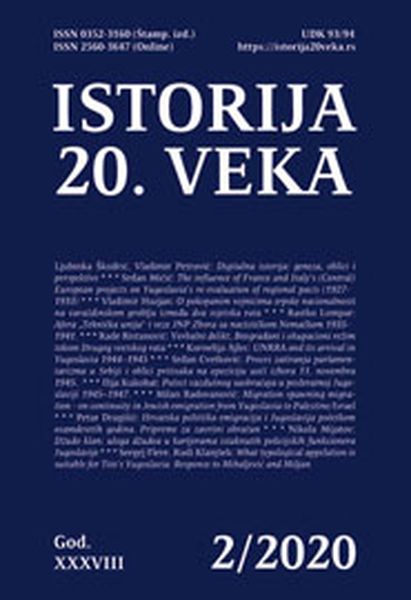PROCES ZATIRANJA PARLAMENTARIZMA U SRBIJI I OBLICI PRITISAKA NA OPOZICIJU UOČI IZBORA 11. NOVEMBRA 1945.
SUSPENSION OF PARLIAMENTARY PROCESS AND FORMS OF PRESSURE ON THE OPPOSITION BEFORE THE ELECTIONS IN SERBIA IN NOVEMBER 11, 1945
Author(s): Srđan CvetkovićSubject(s): Politics / Political Sciences, History, Recent History (1900 till today)
Published by: Institut za savremenu istoriju, Beograd
Keywords: Serbia; Elections; Democracy; Political Culture; Communism; Parliamentarism;
Summary/Abstract: The process of suspending parliamentary democracy and introducing a one-party dictatorship in Socialist Yugoslavia went through three phases but was never formally legitimized. In the first phase, before establishing power in the election on 11 November 1945, the Communist Party of Yugoslavia first eliminated the opposition, acting with monopoly on institutions, State Security, courts, and all-important social organizations, as a part of a broad coalition of the People’s Front. The second phase of illusory political pluralism implied establishing a one-party monopoly in the Front, in which recent satellites slowly ideologically merged. In the third phase all social forces found themselves in one monolithic organization, which became the ideological transmission of the Communist Party for influencing the masses, under the new name of SSRNJ (Socialist Alliance of Working People of Yugoslavia). The election on 11 November 1945 brought significant suffrage extension (women, soldiers, people over 18), but also a completely narrowed choice. The election climate was everything but democratic. Disagreeing with the election legislation, atmosphere, impossibility of free political engagement as well as the absence of freedom of the media, the opposition opted for an election boycott on 22 September 1945. By means of splitting parties and fusing their pro-government wings, political processes against opposition leaders, suppression of independent media, and similar techniques, the Communist Party of Yugoslavia soon paved the way to one-party dictatorship. The suspension of even an illusory form of party pluralism as well as the transition from a hegemonic party system to a one-party system happened more rapidly and with less resistance than in other Eastern European countries. The Communist Party of Yugoslavia’s misuse of the strong antifascist resistance movement to brutally liquidate political opponents at the end of the war contributed to this process. In this kind of atmosphere, the election brought an almost 100% victory of the People’s Front and marked the definitive demise of the opposition as well as the establishment of a one-party system that would last for almost half of a century.
Journal: Istorija 20. veka
- Issue Year: 2020
- Issue No: 2
- Page Range: 151-172
- Page Count: 22
- Language: Serbian

